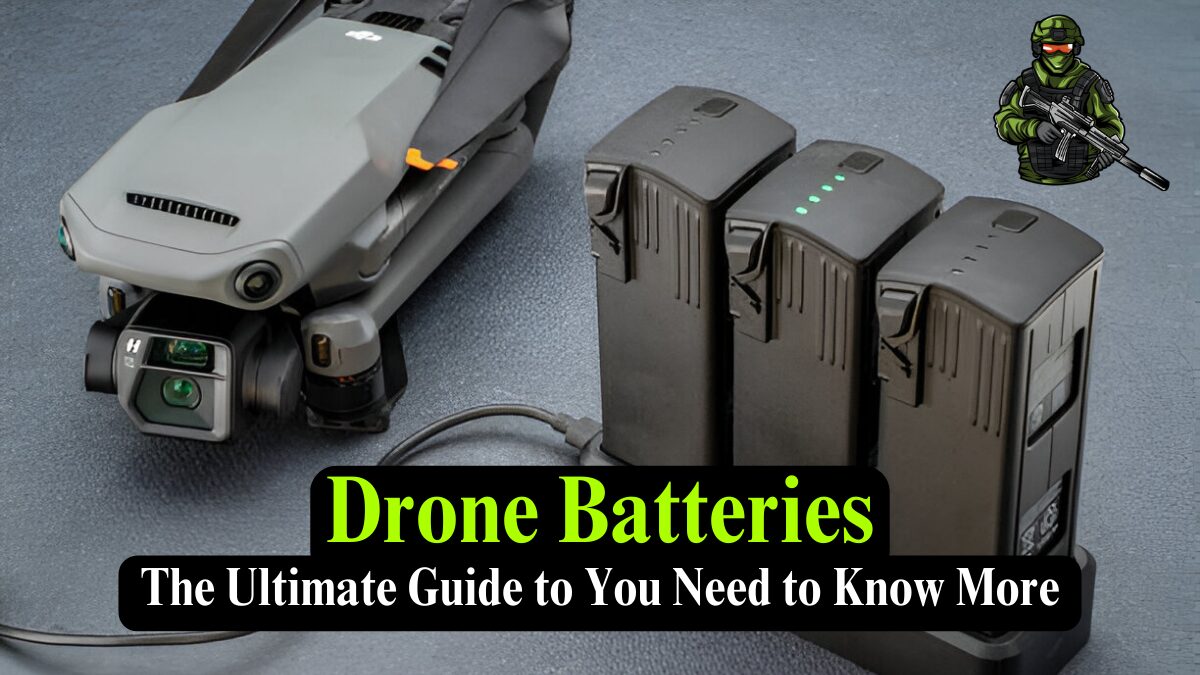Drone Batteries the Ultimate Guide to You Need to Know More
Drones have revolutionized the way we capture footage, survey land, and explore new perspectives. Central to a drone’s functionality is its battery, which dictates how far, how fast, and how long a drone can fly. In this comprehensive guide, we’ll explore everything you need to know about drone batteries—from their types and capacities to tips for maximizing their lifespan.
Types of Drone Batteries
Lithium Polymer (LiPo) Drone Batteries
LiPo batteries are the most common type used in drones due to their high energy density, lightweight design, and discharge rates. However, they require careful handling to prevent damage or safety risks.
Key Characteristics:
- Lightweight: Optimized for aerial applications.
- High Discharge Rates: Delivers bursts of energy for responsive control.
- Voltage Per Cell: Typically 3.7V per cell.
Pros:
- High energy-to-weight ratio.
- Affordable and widely available.
- Customizable configurations for voltage and capacity.
Cons:
- Requires balanced charging.
- Sensitive to overcharging and deep discharging.
Nickel-Metal Hydride (NiMH) Drone Batteries
NiMH batteries are less common but offer benefits like durability and ease of use.
Key Characteristics:
- Voltage Per Cell: Approximately 1.2V.
- Lower Energy Density: Heavier than LiPo batteries.
Pros:
- Safer and more stable than LiPo.
- Environmentally friendly.
Cons:
- Heavier and bulkier.
- Slower discharge rates.
Understanding Drone Battery Ratings
Capacity (mAh) of Drone Batteries
Measured in milliampere-hours (mAh), this determines how long the battery can provide power. Higher capacities typically mean longer flight times.
| Battery Capacity | Estimated Flight Time |
| 1500mAh | 5-7 minutes |
| 5000mAh | 20-25 minutes |
| 10,000mAh | 40+ minutes |
Voltage (V) of Drone Batteries
Voltage affects motor performance and speed. Common configurations include:
- 3S (11.1V): Suitable for smaller drones.
- 6S (22.2V): Preferred for professional or racing drones.
Discharge Rate (C Rating)
The C rating indicates how quickly a battery can discharge its power. For instance, a 20C 2000mAh battery can discharge at a maximum of 40A (20 x 2).
Weight
Battery weight significantly impacts flight time. Lighter batteries reduce the load but may compromise capacity.
How to Maximize Drone Battery Life
Best Practices
- Avoid Overcharging: Use a balanced charger to prevent overcharging.
- Store Properly: Keep batteries at 50% charge in a cool, dry place.
- Inspect Regularly: Check for swelling or damage before each use.
- Avoid Deep Discharge: Keep the battery level above 20%.
Charging Tips
- Use manufacturer-recommended chargers.
- Avoid charging in extreme temperatures.
- Monitor charging to ensure balanced cells.
Maintenance Tips
- Clean connectors to ensure proper conductivity.
- Cycle batteries periodically (fully charge and discharge).
- Dispose of damaged batteries responsibly.
Case Studies: Real-World Applications
Professional Filmmaking
Drone operators in the film industry often use high-capacity LiPo batteries to power larger drones equipped with cameras. These setups demand precise battery management to ensure uninterrupted shoots.
Example: A DJI Inspire 2 with dual 4280mAh batteries can achieve up to 27 minutes of flight time while carrying a 6K camera.
Agriculture and Surveying
Surveying drones rely on 6S LiPo batteries to cover extensive areas efficiently. Operators prioritize long flight times over speed to capture high-resolution data.
Common Drone Battery Issues
Swelling
Swelling indicates internal damage, often caused by overcharging or deep discharges. Swollen batteries should be disposed of immediately.
Reduced Flight Time
Flight times decrease as batteries age. Regular cycling and proper storage can mitigate this issue.
Connectivity Problems
Dirty connectors can disrupt power flow. Cleaning connectors with isopropyl alcohol can resolve this.
FAQ
How long do drone batteries last?
Drone batteries typically last 300-500 charge cycles, depending on usage and maintenance.
Can I use third-party batteries?
Yes, but ensure they match your drone’s voltage and capacity requirements to avoid damage.
How do I dispose of old drone batteries?
Take them to a certified e-waste recycling center. Never throw them in regular trash.
What is the best temperature for storing drone batteries?
Store batteries at room temperature, ideally around 20-25°C (68-77°F).
Can I fly in cold weather?
Cold temperatures reduce battery performance. Preheat batteries to 15°C (59°F) before flying.



